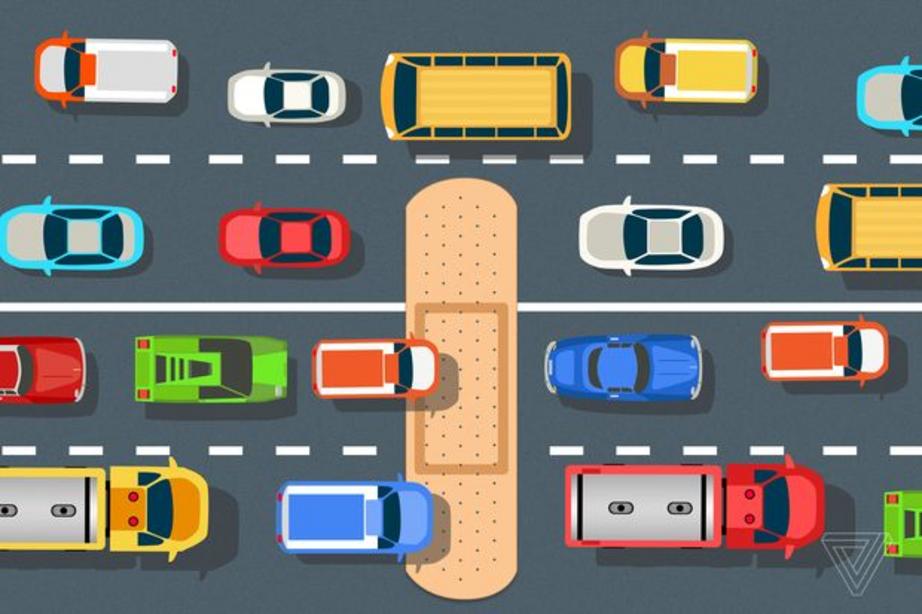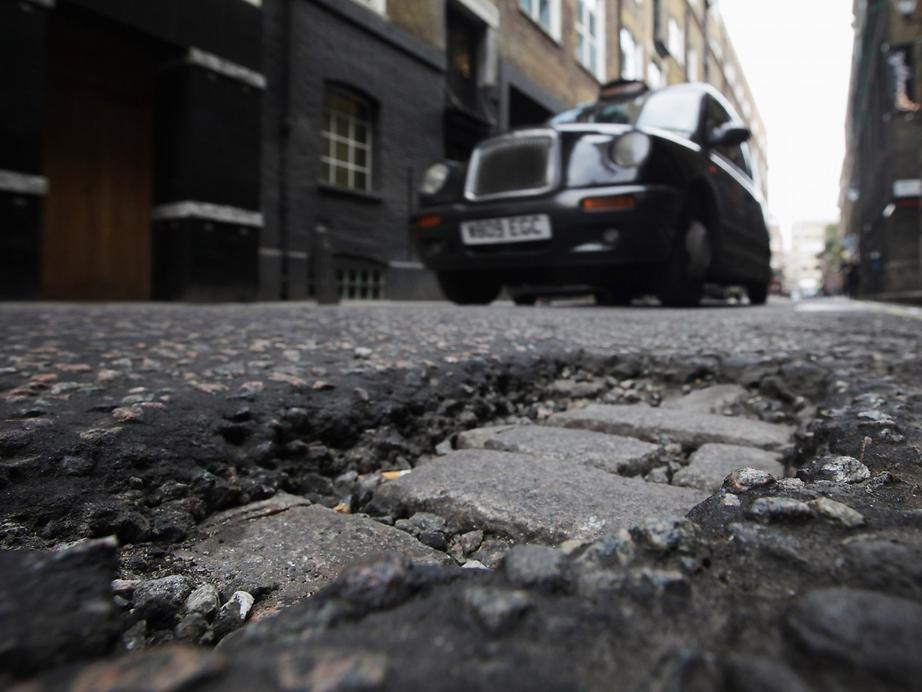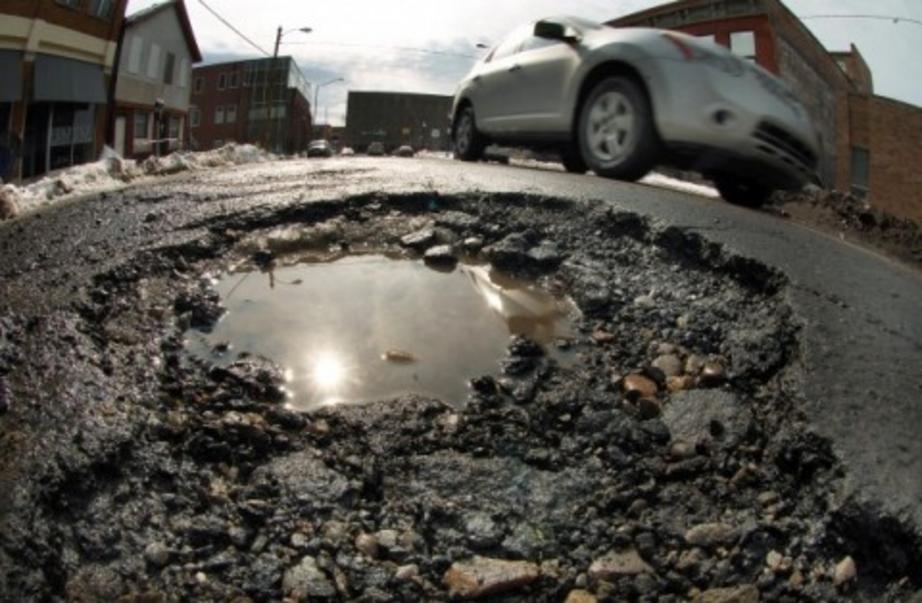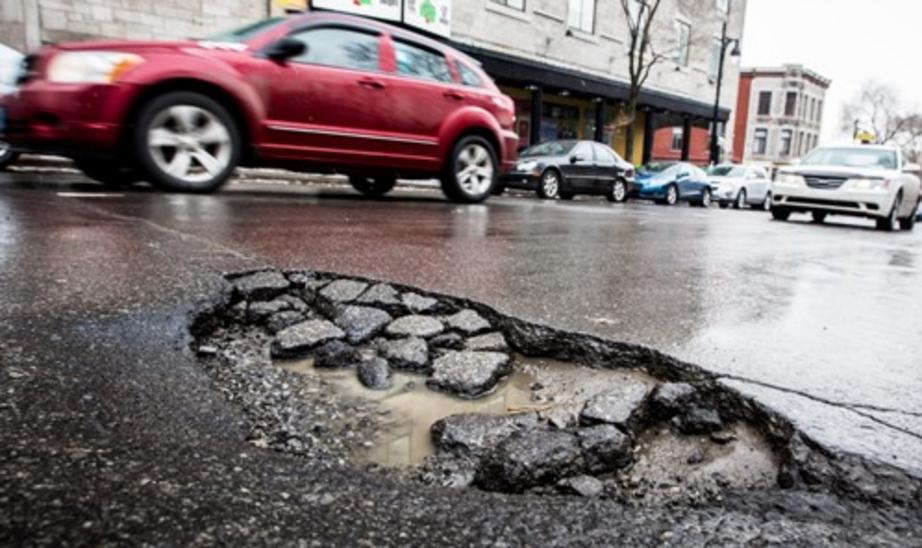Potholes: bacteria in concrete should help prevent cracks
Promising avenues for asphalt and concrete.
First, there are small cracks in the pavement. Next thing you know, the pothole-filled street is closed off for repairs and traffic is congested for a week. America’s infrastructure is falling apart. It’s a political issue, but some policy solutions — just like building more roads — are unlikely to help. So while we wait on that, scientists are working on materials that repair themselves and are focusing on two of the most important materials in infrastructure: asphalt and concrete.
Asphalt is mainly used for road surfaces. It’s easy to apply: you just warm it, mix it, apply it, and once it cools it becomes a hard road surface. It’s often porous, because these pores absorb the noise and make the roads a little quieter. But the downside is that this porous asphalt isn’t durable; that’s how you get cracks and potholes. This is more than an annoyance that causes bumpy rides and traffic congestion. Damage creates unsafe riding conditions, and poorly maintained roads may be responsible for up to a third of all highway fatalities.

Bacteria in concrete should help prevent cracks
One solution might be self-healing asphalt, says Erik Schlangen, a materials scientist at Delft University in the Netherlands. His asphalt has small steel fibers mixed in, which makes the asphalt conductive. If you add heat by running a big induction machine — basically a huge magnet — over the asphalt, it’ll warm up the asphalt and steel fibers and then the small cracks close on their own. (Sunshine can create some of this effect, too, but it’s usually not enough.) So it’s not entirely self-healing, because you need the induction machine, but it’s still less trouble than closing a road off for days to do repairs.
Self-healing asphalt has been tested on 12 different roads in the Netherlands, and one of these has been functioning and open to the public since 2010. All are still in perfect condition, but Schlangen notes that even normal asphalt roads are fine for about seven to 10 years and that it’s in upcoming years that we’ll really start to see the difference. He estimates that the overall cost of the material would be 25 percent more expensive than normal asphalt, but it could double the life of the road, and one estimate suggests it could save the Netherlands 90 million Euros a year if all the roads used this material. China has built a self-healing road, too.

Building off this special asphalt, there are even cooler ideas coming from Schlangen’s lab. “Putting steel fibers in the asphalt mean that you can send information to it, so it might be possible to charge electric cars on the road they’re driving on,” he says. “This is early, but we are going to make some trials in front of traffic lights, where the idea is that you can charge your car a bit while waiting in traffic.”
But roads aren't the only piece of infrastructure failing. Just look at the crumbling bridge off the coast of California that has stranded visitors in the Big Sur area. Other sources say that 24 percent of the country’s bridges are either deficient or just plain obsolete. The key material here is concrete, and scientists are also involved in trying to improve it. It’s one of the oldest materials on earth and also one of the most environmentally harmful. Producing the materials for concrete is responsible for 10 percent of the carbon dioxide emissions worldwide, according to Franz-Josef Ulm, director of MIT’s Concrete Sustainability Hub, which brings together researchers and people in the concrete industry to try to make the material more durable and eco-friendly. (Many companies are trying to make eco-friendly concrete.) Much of the research is new, because even though concrete has been around for a couple of thousand years, the density of the elementary building block of concrete has only been known since 2007 because before there weren’t advanced enough tools to do the measurement.
One project is looking at how to reduce the fuel consumption of vehicles by tweaking the material of the roads. “When you drive on pavement with your car, you create a little dimple,” says Ulm. “You don’t see it because it’s very small, but because of the behavior and texture of the material you’re actually always driving slightly uphill.” Ulm compares it to running on a beach on soft sand, and just as running on sand is harder than running on a hard surface, these “dimples” take more energy from the car. So, engineering the concrete to change the roughness can reduce the environmental impact. In the study, with roads in Virginia, this process reduced the environmental impact of cars driving on pavement by up to 3 percent. “For an individual car it doesn’t make much difference, but for a state and for a nation, it plays a huge role,” Ulm adds.

The pavement industry is starting to take some cues from this research, says Julia Garbini, executive director of the Ready Mixed Concrete Research & Education Foundation, which partners with the Concrete Sustainability Hub. It’s a little early to go into specifics, but “a lot of the work happening right now is already beginning to influence specifications of how concrete is made,” she says.
People love to build new roads, they don’t love to maintain existing ones
Strength is another way that concrete can be improved. The material is cheap, but it cracks easily, so we add steel bars to take over the weight of the structure when the cracks happen. But when the concrete cracks, water, or salt from de-icing buildings, seep in and then the steel inside starts to corrode. That damages the entire structure and is a big reason why a lot of old bridges are falling apart. “If you you want to make a self-healing concrete, we have to make something that fills up the cracks, so that no water or salts can penetrate anymore,” says Schlangen.
Right now, the most promising solution is adding a special bacteria to the concrete. The bacteria live inside the mixture, and produce calcium carbonate that helps fill in the cracks when they develop. “We know that these bacteria can live in nature for more than 200 years, so we developed technique to put those bacteria in the concrete and it’ll survive lifetime of concrete structure,” Schlangen adds. Plus, they don’t do anything to humans, so it’s safe.
Testing the concrete is tricky because a failure could be truly catastrophic, unlike a failure of self-healing asphalt. Still, Schlangen says his team has already applied the concrete to some small structures, though they’re still tinkering with the material. Concrete regulations are pretty strict in Europe and America, but countries with more lax regulations — like China, Japan, and Korea — have expressed interest in the material.
So what’s keeping us back?
There’s the rate of scientific progress, of course, and also politics. It’s good that infrastructure is one of the few issues that has attracted support from both Democrats and Republicans. Problem is, our biggest infrastructure investments were in the 1950s and 1960s and we’ve been neglecting a lot of the infrastructure ever since, says Harvard Business School professor Rosabeth Moss Kanter, who is author of MOVE: Putting America’s Infrastructure Back in the Lead. Nowadays, it’s a lot easier to build something new and exciting than it is to get people pumped up about maintaining something.
But attitudes toward new materials are part of it, too, says Rider Foley, an engineering professor at the University of Virginia. He’s studied innovation in the construction industry, especially as it applies to nanomaterial innovations like self-cleaning windows, or steel coatings that resist rust. “The construction industry specifically is lagging behind some of the early predictions and forecasts” of when it would adopt these new materials, he says. Many in the industry are averse to risk and they have faith in materials as they are. “There’s all this materials testing that has gone on with concrete for 50 to 75 years,” says Foley. “There’s types of integrity testing and stress testing and loading and all of that, and that’s a body of knowledge that civil engineers have confidence in.” When it comes to these new materials, there’s not a high volume of manufacturing, so the cost is still high, and “it’s hard for them to kind of see some of the advantages of changing the design like this.” But with the country’s infrastructure in disrepair, and no real plan in sight, we need every bit of help from science we can get.

